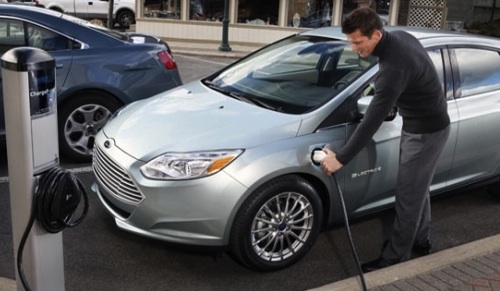By Shari Prymak
Slowly but surely, electrified vehicles are becoming increasingly popular in the new car market. Automakers are releasing new hybrid, plug-in hybrid, and full electric vehicles on a continuing basis. Although many of these vehicles started off as expensive accessories for environmentally-conscious early adopters, the technology has evolved to the point where purchasing an electrified vehicle can be a financially smart move.
Hybrids are vehicles that run on both gas and electricity. Although they require the same gas station fill-ups and maintenance routines as a gas-only vehicle, hybrids can save you money over the long-haul under certain circumstances. Hybrids are designed to maximize fuel savings under high-load, stop-and-go driving conditions, such as city traffic. In this type of environment, many hybrids can consume up to 50 percent less fuel than the gas-powered equivalent. Low load driving conditions, such as highway driving, however, can reduce these savings. Hybrids also usually command a price premium over the equivalent gas model, however, the price difference has gone down in recent years.
Another attractive option in the electrified market is the plug-in hybrid. Like a regular hybrid, a plug-in hybrid uses both gas and electricity, only here you have the option to drive on electricity alone for a limited range when the vehicle is charged. Many plug-in hybrids have an electric range between 30-70 km, and can be charged in a few hours using a charging station or wall outlet. For those who have a short commute, it is conceivable to drive on a daily basis without using any gas at all. The other benefit to plug-in hybrids is that some provinces offer government incentives which can dramatically reduce the initial purchase price. The federal government is offering a purchase incentive of up to $5,000 which plug-in hybrid models qualify for.
Electric vehicles take things one step further by eliminating the gas component altogether. Depending on the make and model, electric vehicles can have a driving range anywhere between 100-500km. Charge times vary from as little as 1 hour using a level 3 quick charger to as long as 40 hours using a 110V wall outlet. The average annual charging cost of an electric vehicle is often only a fraction of that of an equivalent gas vehicle. Electric vehicles also eliminate the need for many maintenance items, such as oil changes, belts, and spark plugs.
Electric vehicles have a few serious drawbacks, most of which revolve around range. The bottom line is that most electric vehicles can’t come anywhere close to a traditional gas vehicle when it comes to the overall driving range. Electric vehicle ownership relies on the need for an accessible charging station. Given the fact that charging stations are often few and far between, range anxiety can be a serious concern for some.
As an example, let’s take a look at the 2019 Chevrolet Bolt, which is an all-electric crossover. The Bolt has an approximate electric range of up to 380 km. The charge time for the Bolt is 1 hour using a level 3 quick charging station, 9.5 hours on a 240V station, and 26 hours on a 110V wall outlet. The annual charge cost is about $450, compared to about $1,800 for a similar gas car. The Bolt has a starting MSRP of $42,895. The price, however, is reduced by $5,000 thanks to the federal electric vehicle incentive.
How do all of these electrified vehicles compare to a traditional gas-powered vehicle? Let’s take a look at Canada’s best seller, the Honda Civic, as an example. The 2019 Honda Civic LX CVT has an MSRP of $22,090. It has an official fuel economy rating of 7.8L/100km in the city and 6L/100km on the highway. Annual fuel costs should run approximately $1,800 with fuel prices around $1.00L at 24,000km per year. The Civic is not only the most affordable option out of these examples, it also has a proven track-record and top-notch resale value due to high demand. Not counting depreciation, the electric vehicle option only begins to make sense after 7 to 8 years of ownership, when the price difference is made up in fuel savings.
Consumers have many choices when it comes to electrification. The best choice for you will ultimately depend on a number of factors, including your budget, driving habits, expected ownership period, and accessibility to an electricity source, among other things. If an electrified vehicle suits your lifestyle, and you are not ready to commit to the limitations of a full electric vehicle, a plug-in hybrid might be a good choice. They offer an electric vehicle ownership experience without the range limitations, and, thanks to provincial incentives, some can even be had for a reasonable purchase price. If your goal, however, is the purchase a vehicle with the lowest possible cost of ownership, then an entry-level compact car with a traditional gas drivetrain is still one of the best options.

